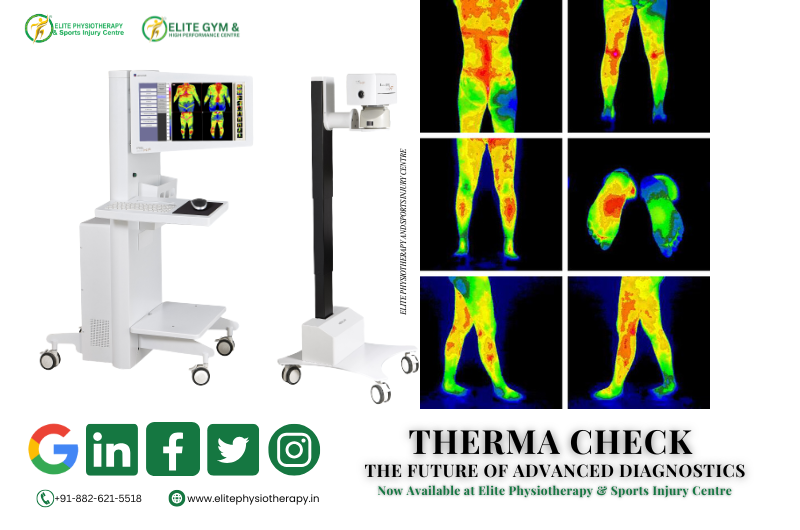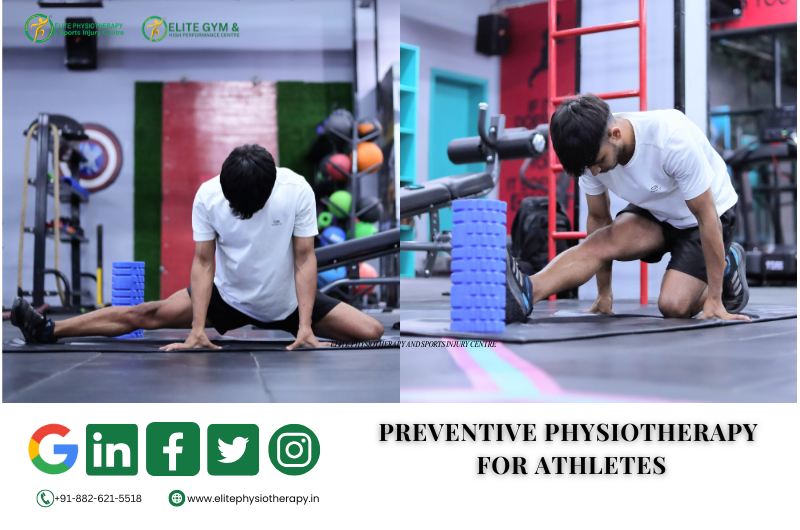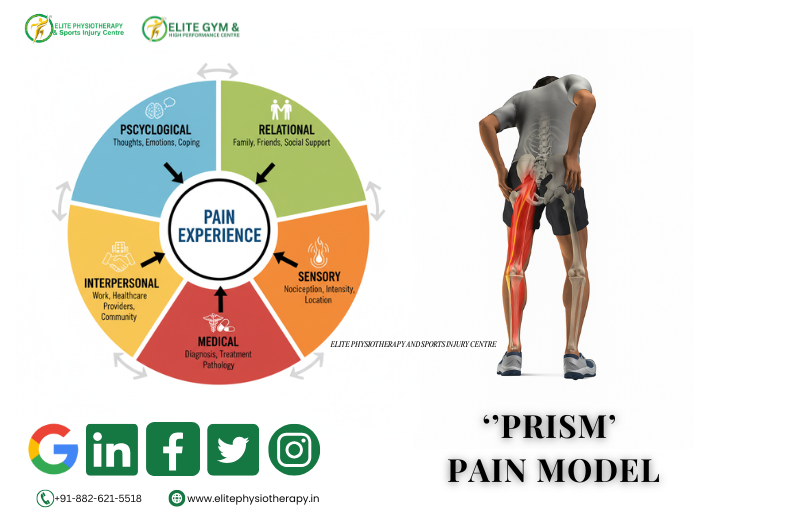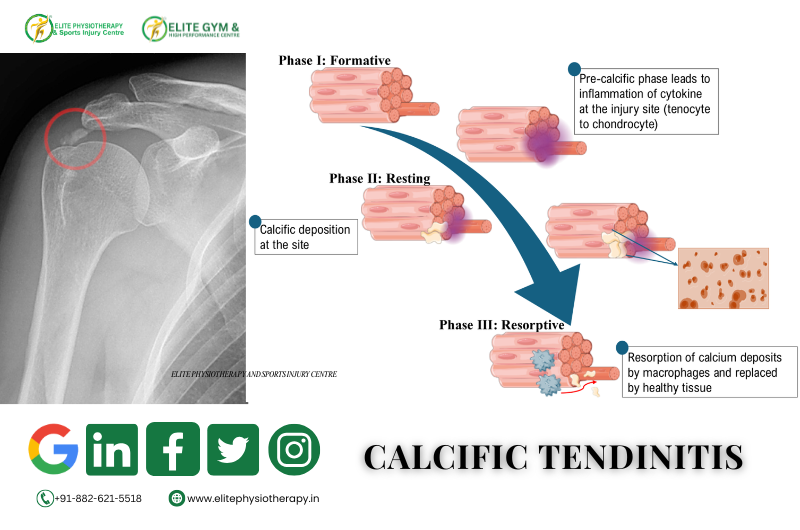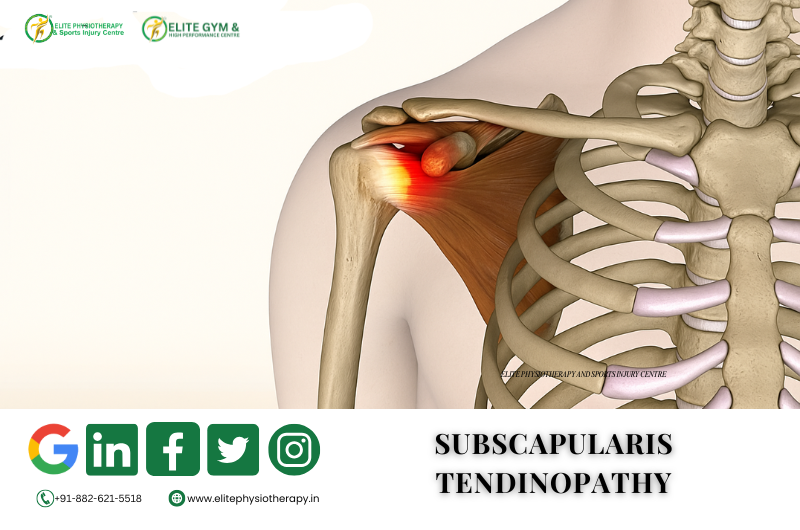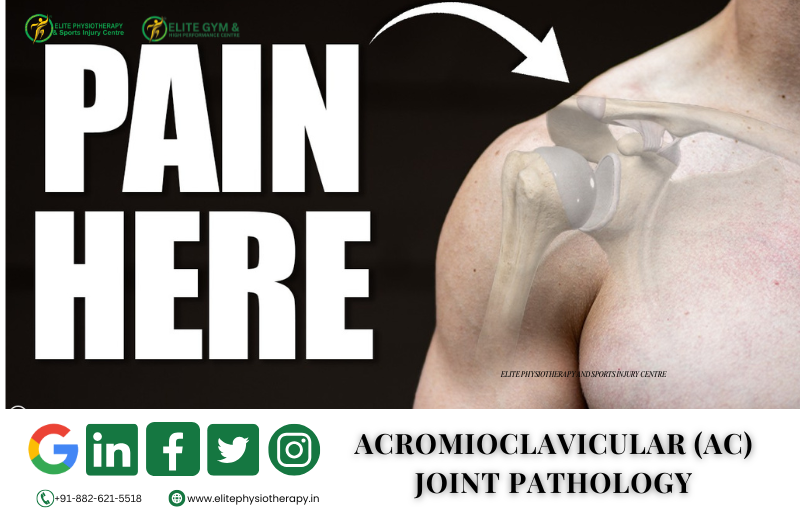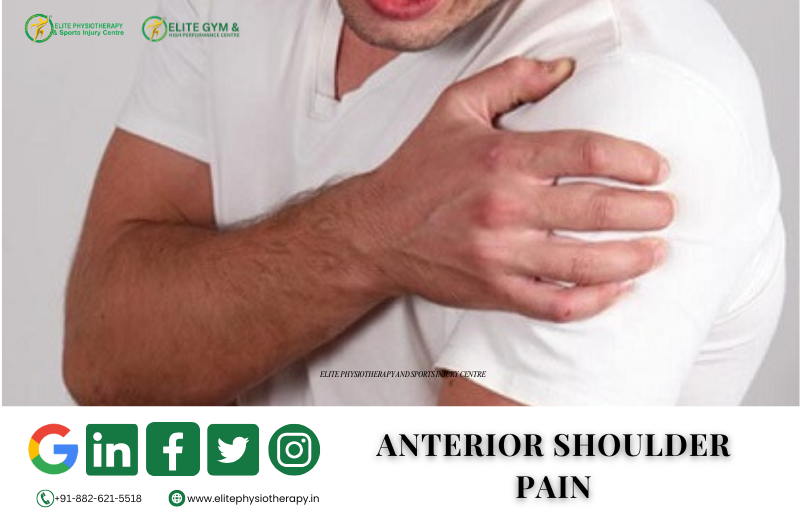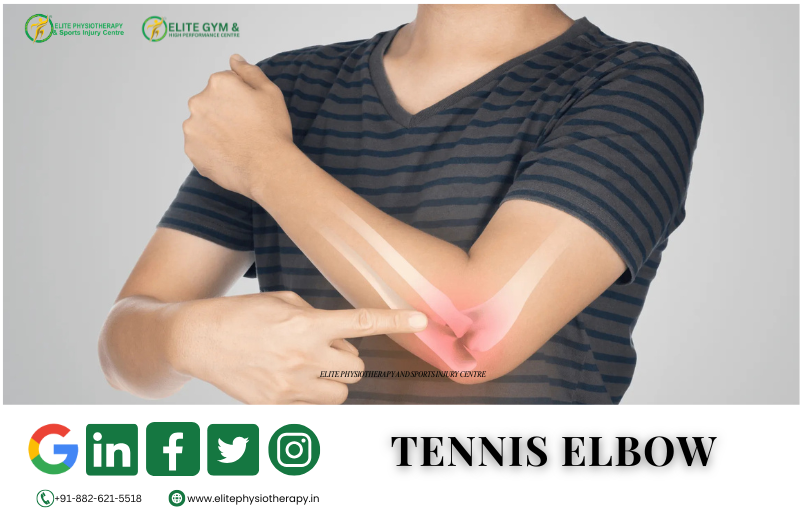Pain in the front of the shoulder joint is referred to as anterior shoulder pain. It frequently arises from irritation, inflammation, or damage to the structures surrounding the shoulder capsule, rotator cuff, or biceps tendon. Athletes, exercise fanatics, and even office professionals may experience this pain as a result of bad posture or repetitive strain.
At Elite Physiotherapy and Sports Injury Centre, we regularly treat athletes who suffer from anterior shoulder pain as a result of repetitive tension and muscular imbalance, particularly those who play overhead sports like badminton, swimming, and wrestling.
Causes of Anterior Shoulder Pain
Several musculoskeletal and soft-tissue conditions can lead to pain in the front of the shoulder, such as:
- Biceps Tendonitis: Inflammation of the long head of the biceps tendon.
- Subscapularis Tendinopathy: Overuse of the subscapularis muscle that causes discomfort is known as subscapularis tendinopathy.
- Labral Tear (SLAP lesion): An injury to the superior labrum, where the biceps tendon attaches, is known as a labral tear (SLAP lesion).
- Shoulder Impingement Syndrome: Compression of soft tissues during arm raising.
- Acromioclavicular (AC) Joint Pathology: Pain radiating to the anterior aspect is known as acromioclavicular (AC) joint pathology.
- Postural Dysfunction: Overload is caused by postural dysfunction, which includes a rounded shoulder position and scapular dyskinesia.
Clinical Features
Front shoulder pain, particularly while lifting or performing overhead tasks.
- Weakness when flexing or rotating inside.
- A catching or clicking feeling in the shoulder.
- Nighttime discomfort, particularly when lying on the affected side.
Diagnostic Methods and Examination
A detailed clinical examination is essential for accurate diagnosis. Physiotherapists at Elite Physiotherapy perform a biomechanical assessment, posture analysis, and palpation to locate tenderness.
Special Tests Used:
- Speed’s Test: Evaluates the pathophysiology of the biceps tendon.
- Yergason’s Test: Verifies the biceps tendon’s integrity.
- The Hawkins-Kennedy Test detects impingement.
- Lift-Off Test: Identifies weakness in the subscapularis muscle.
- O’Brien’s Test: Labral involvement is evaluated using O’Brien’s Test.
Imaging tests like MRIs and ultrasounds are used if necessary to confirm the diagnosis and rule out more serious structural damage.
Physiotherapy Management at Elite Physiotherapy and Sports Injury Centre
At Elite Physiotherapy and Sports Injury Centre, physiotherapists provide personalized and evidence-based treatment for anterior shoulder pain. Our approach focuses on pain relief, restoring mobility, and improving shoulder stability through advanced physiotherapy techniques and modern modalities.
1. Pain Reduction and Inflammation Control
- Shock Wave Therapy: Promotes tendon repair and breaks down scar tissue.
- Super Inductive System (SIS): Uses deep electromagnetic stimulation to improve blood flow and ease tense muscles.
- High-Intensity Laser Therapy: Effectively reduces inflammation and encourages deep tissue repair.
- Dry Needling and Cupping Therapy: Tight anterior shoulder muscles can have their knots released and their circulation improved with dry needling and cupping therapy.
2. Manual Therapy and Soft Tissue Mobilization
- Glenohumeral joint mobilizations help relieve capsular tightness.
- Myofascial release and trigger point therapy target overactive muscles like the pectoralis major and biceps.
3. Restoring Range of Motion (ROM)
Gentle stretching of the anterior capsule and strengthening of the posterior muscles restore balance.
Exercises include:
- Pendulum swings
- Shoulder external rotation with the theraband
- Sleeper stretch
- Scapular setting exercises
Progressive ROM work ensures pain-free functional mobility.
4. Strengthening and Stabilization
Rehabilitation focuses on the rotator cuff, scapular stabilizers, and core.
Key exercises include:
- Resistance band external rotation
- Prone Y, T, and W exercises
- Scapular retraction drills
- Closed-chain stability training (wall push-ups, weight shifts)
These exercises help build strength and prevent recurrence.
5. Neuromuscular Re-education
Retraining the shoulder’s movement pattern is essential once the pain subsides. We assist players in regaining shoulder control and stability during dynamic actions like grappling and throwing by using proprioceptive training and SIS.
6. Return to Sport or Activity
We create rehabilitation plans tailored to certain sports once full strength and mobility have returned. For instance, swimmers prioritize rotator cuff endurance and symmetry, whereas wrestlers concentrate on shoulder stability under load, and cricketers concentrate on overall shoulder integrity
Conclusion
If left untreated, anterior shoulder pain can severely restrict daily and athletic activities. In order to provide quicker, more durable healing, we at Elite Physiotherapy and Sports Injury Centre combine cutting-edge modalities like Shock Wave, SIS, High-Intensity Laser, Dry Needling, and Cupping Therapy with sophisticated diagnostic procedures.
Our individualized treatment programs help you return stronger and pain-free by addressing the underlying biomechanical reasons of your pain.
Visit Elite Physiotherapy and Sports Injury Centre right now for professional assessment and cutting-edge physiotherapy treatment if you’re dealing with chronic shoulder pain.

